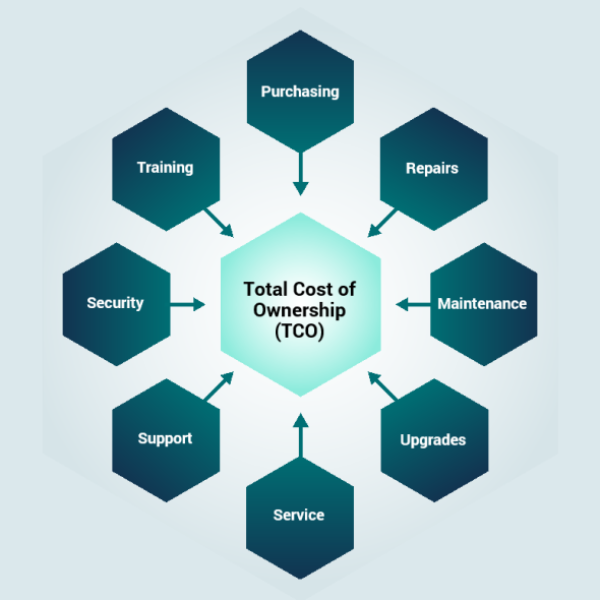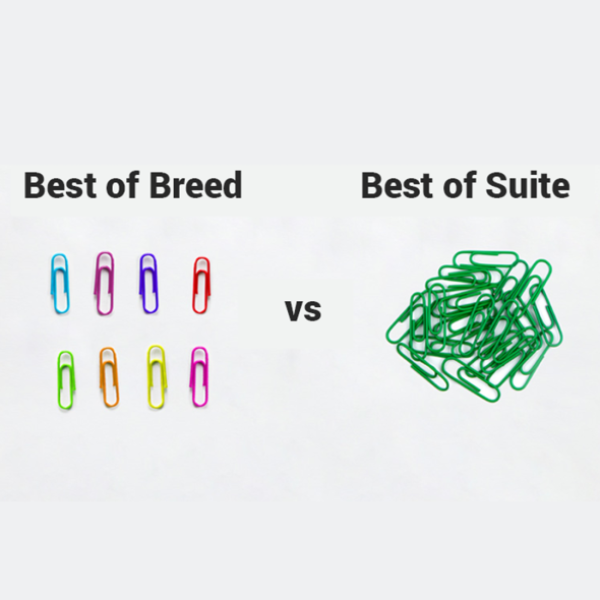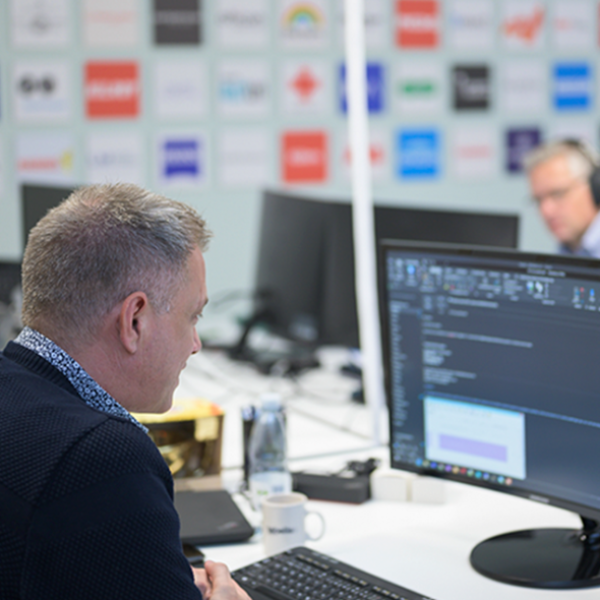10 tips for moving ERP to the cloud
Get Tabellae’s top 10 tips for moving ERP to the cloud and insights on:
1) How to get a handle on your – and your customers’ – document requirements
2) How to avoid security risks such as invoice fraud
3) How to get a solution with low effort and low total cost of ownership

1. Requirement specifications
A good requirements specification results in a project that is on time and on budget
It ensures a needs review. But don’t make it TOO detailed so that it locks the project in and excludes the possibility of incorporating new experiences along the way, new technology and limits the best solutions.
Tabellae’s experience is that in projects that are going really well, there has been a dialog about what is needed. In projects that have gone less well, many have had a very detailed requirements specification, but it was very rigid.
Be open to change
The whole requirements specification part is incredibly important to think about, but if you have TOO many, we find that it leads to inflexible projects. If you also don’t know your requirements, don’t lock down the requirements specification. You will always learn more along the way – especially in dialog with experts who have tried it before.
ERP consultant Mette Ohmsen explains:
“There is far too much focus on functional requirements and too little focus on everything else that is also important for your project experience and operation. It’s only when you go live that it all begins. Therefore, you need to focus on operations, documents and other areas such as IT auditing and security early on in your project. And if you’re going to work with requirements specification, you need to do it on as informed a basis as possible, and you do this by bringing in some advisors to support you in this.”

2. Avoid 1:1 upgrades
We occasionally come across customers who say: “We just need the same thing we had last time – we just need it in the cloud. It has to be, because we just want it to be cheap, quickly implemented and we don’t want any surprises because we deliver critical goods”.
Don’t settle on options in advance
Tabellae doesn’t recommend this. A 1:1 upgrade is often a foregone conclusion. It offers no business benefits and often ensures a (too) low price, resulting in the ‘wrong’ solution and supplier for your needs.
If you choose a 1:1 upgrade, the business will often not be happy with it because the technology evolves. If we look at the Microsoft platform, new functionality is constantly being added – and it’s almost crazy not to use it.
Remember what you’re paying for
“It would be a shame to think that nothing has happened on a D365FO compared to an AX2009. It would also be a shame to think that your business hasn’t changed radically in that time. There is something about a 1:1 upgrade that says that you have to be careful not to build something that is too big and massive, so that your ambition level is not too high to begin with. So minimal viable product, I understand that. But you also have to deal with the fact that your management thinks: ‘What exactly have we paid DKK 35 million for, because we haven’t gotten anything new’,” says ERP consultant Mette Ohmsen.

3. Security
Many people still ask “is it safe to go to the cloud”. The short answer is yes. Generally speaking, security in the Cloud is now completely under control, and it is far more secure than having your own data room. However, security is still a huge issue in many ways when you go to the Cloud, which is why there is a lot of focus on it. Mette Ohmsen substantiates:
“When we talk about security in Cloud vs. On-Premise, you have to be aware of what kind of mindset you have in your existing IT department and what they are used to. Because it requires a different mindset, as the infrastructure is different in Cloud than On-Premise”.
Document security is an overlooked area
Tabellae finds that document security is often not considered from the start – and it can be costly if it’s not in order. The generation and transportation of documents, as well as the roles that handle them, need to be managed. To give two real-world examples:
- A company sends an invoice with a very high amount to a recipient for payment. If the account number is changed in the PDF, the payment is made to the wrong account. Unfortunately, we have experienced this scenario several times because document security is not included in the ERP project from the start – and if it happens several times, it can be costly.
- Another thing is Britta. Everyone knows Britta. She was the one who changed the account number so the money ended up in her own account. She had all the right roles in the system, and if she got a Dynamics 365, she would probably get a role that could do everything. This can be prevented with a variety of security measures, such as multiple authentication.
There are several aspects to consider
Mette Ohmsen adds her view on security in the Cloud:
“There are two security aspects: 1) infrastructure security, where Cloud vs. servers in the basement is relevant, and 2) there is what I call ‘compliance’, i.e. security around roles, responsibilities and GDPR. I think it’s valuable to distinguish between the two worlds – and you need to keep both in mind.
Roles and rights are my hobbyhorse. You simply have to include that in your analysis, and it’s extremely difficult to relate to. It’s much more about processes than IT, but it’s about who should be allowed to do what and when. In addition, I simply don’t understand why so many implementation partners don’t include or relate to the fact that there is something called an IT audit, where you as a company have to account for this and present how you handle your segregation of duties. That’s super important, and it’s also difficult”.

4. Price
How much does it cost to move to the Cloud? This is typically the question that no one can or will answer – and neither can we. What costs are transactions, number of virtual servers and storage space.
There are consultancies that can advise on this and licenses. But it’s complex and it’s hard to make a business case – and no one can make a business case that takes into account the end use.
The other issue is staffing and what it costs. How many employees will you need to implement? And how many will you need to maintain it afterwards?
Evergreen and compliance costs
One last thing that also changes when we go to the cloud is: ‘You don’t implement an ERP system and then everyone goes home’. You implement an ERP system in Evergreen. This means that the entire workforce you need is different than in the old days, when it was down in the basement. This includes staff for testing, as Microsoft, for example, updates 4 times a year. This requires contingency, so include it in the operating budget, because it’s a necessity in a cloud system. Mette Ohmsen adds:
“There are some things that you may not dare to realize, because you may also imagine that now there will be some opportunities, and it will not cost more to run application management on a D365FO compared to our old AX. That’s what it does”.
Tabellae’s best advice is to talk to someone who has been through it and has real life experience of implementing an ERP system in the cloud and taking it live (see also point 10).

5. Performance in the Cloud
Get a handle on performance – especially when it comes to documents. Cloud performance has improved and today there are various ways to further optimize performance, including scaling up via Azure.
Cloud performance is a surprise to many
You can scale up and down, but cloud performance can be a surprise. Tabellae therefore recommends that you bring an architect who has tried it before. It’s annoying when a user has been used to getting a response in 2 seconds, and suddenly that response comes 28 seconds later – and it can be expensive to solve the performance problem in the wrong way.
Mette Ohmsen substantiates:
“Now, I’m not a big fan of writing all kinds of agreements with your suppliers, but it’s a good idea to insist that the supplier comments and relates to performance in the design they create.”

6. Test, test, test
Every time you upgrade, you need to test. Luckily, a lot can be automated, it’s just a matter of prioritization.
A quick checklist for testing constitutes:
- Who should test? Most often, it’s the best people in the business because they’re the best at it – and that’s a surprise to many. The reasons why this is a huge problem is that they are typically used for everything else.
- How much time should we dedicate to testing?
- What is the purpose of testing?
- What functionality do we need?
Testing is ultra important
Mette Ohmsen is also clear that testing is incredibly important: “Take advantage of the test automation possibilities and use it already in the implementation process – then you don’t have to write test cases in Word. In addition, I have 2 pieces of advice:
- Start early with process testing, i.e. flow testing and end-to-end testing in a number of areas.
- Make sure you test with the right roles. Many suppliers are opposed to this, because if it’s really difficult, you won’t be able to validate the functionality. If your supplier says this, insist that you first test the functionality where everyone can run through it, and then you MUST test with the correct role afterwards. That’s when you get to the heart of the matter.”

7. Best of Suite / Microsoft “standard”
Standard is not always standard
An eternal discussion, it’s a religion – and there are a few different ones in the ERP world:
- “Best of Suite”: Everything should be in one package
- “Best of Breed”: You buy the best available on the market (ISVs)
It’s not an argument you can win, as there are so many shades of it. But if someone says it’s standard because it’s SAP or Microsoft, for example, the truth is that they may well be right. But if you have to code a lot of code to use the standard, you’re not right. In the end, you end up with a standard product that you’ve shame-coded – and it’s difficult, expensive and time-consuming to maintain.
So listen to multiple religions before making a choice.
Make use of counseling
Whether to use Best of Breed or Best of Suite depends on your business requirements. At Tabellae, we help you choose the right solution from the start by analyzing your requirements. Once this is done, we can provide an overall assessment of whether your needs can be met by a standard solution or a third-party application outside of the ERP system.

8. Coding and customization
Coding and customization is where most people come from. One of the reasons you want to get rid of it is that coding is expensive.
Coding is not risk-free
The more you code, the more you need to test. For example, 100 hours of coding in Dynamics requires a whopping 700 hours of subsequent testing, according to several ERP houses. A coded ERP is also more prone to errors during upgrades. Instead, configure and use ISVs where it makes sense.
Mette Ohmsen emphasizes, however, that coding – in the real world – can sometimes be necessary:
“But your business has to run. Sometimes you have to code if it’s not available in standard or third-party solutions”.

9. Partner choice is more important than software choice
Find a partner you have a good chemistry with, who understands your business and needs. This is 10 times more important than choosing a specific solution. Of course, it also requires some experience, but if you have the same approach and are on the same side of the table, you might not have to look at the contract very much – and that’s not very exciting either.
“Looking at the contract is something to be avoided. The most expensive thing is not execution. It’s conflicts. Avoid them with a good contractual basis that is balanced between the customer and the supplier, and a good chemistry,” says Mette Ohmsen, ERP consultant.
A good contractual basis helps on rainy days
There isn’t an ERP project that doesn’t have both sunny and rainy days. And on those rainy days, it’s nice to have a good contractual basis so you can talk as partners and agree on how much it’s raining today and who’s going to fix the umbrella.
A quick checklist for a good partner is:
– Do they have experience?
– Do they have industry knowledge?
– Are you a good fit? (mentally and project model-wise)
– Are the resources there?
– Are the skills there?
– Common success criteria?

10. Use ERFA – and get great input
How often do you implement ERP in your life? Maybe 3 times. The ERP partner may have 4-6 projects in a year, which is not much globally. It’s therefore difficult to be very experienced when implementing ERP. At Tabellae, we therefore recommend our customers to use ERFA groups.
Free, independent advisor
ERFA groups are your independent “consultancy” – and they’ve done it before. You get advice and sparring about the ERP project, both before, during and after implementation.
Search for ERFA groups with the same ERP system as you and get inspiration that can be extremely valuable and save you change requests.
Bring in external experts
Mette Ohmsen emphasizes the importance of external forces in an ERP project:
“Unfortunately, many companies have the approach that it feels unsafe to go out and bring in strangers and share this very vulnerable clarification process. And yes, it is vulnerable. But it’s worth it. It’s a bit like saying ‘I need to lose 10 kilos before I get a personal trainer’. It could well be that the weight loss accelerates if you just throw yourself into it, even though it’s probably not very fun”.

11. The ordinary: Remember to anchor it in management
The last piece of advice isn’t particularly brilliant and is actually ancient, but it’s rock solid and still holds true: Anchoring in management.
See the ERP upgrade as a business transformation and not an IT project. This way, projects are anchored in management and the entire business takes ownership of the project. It is difficult to achieve success without management buy-in, and it costs time on the project. Make sure there is commitment, willingness and readiness to learn.
Easier to execute
Mette Ohmsen concludes her contribution with:
“Only an angry CEO can throw us into the machine about the success it might otherwise have been. They must participate in the project or steering committee because it makes a huge difference to the ability to execute”.
Consult with us before you start implementing. It doesn’t cost anything, but can save you time and hassle.
